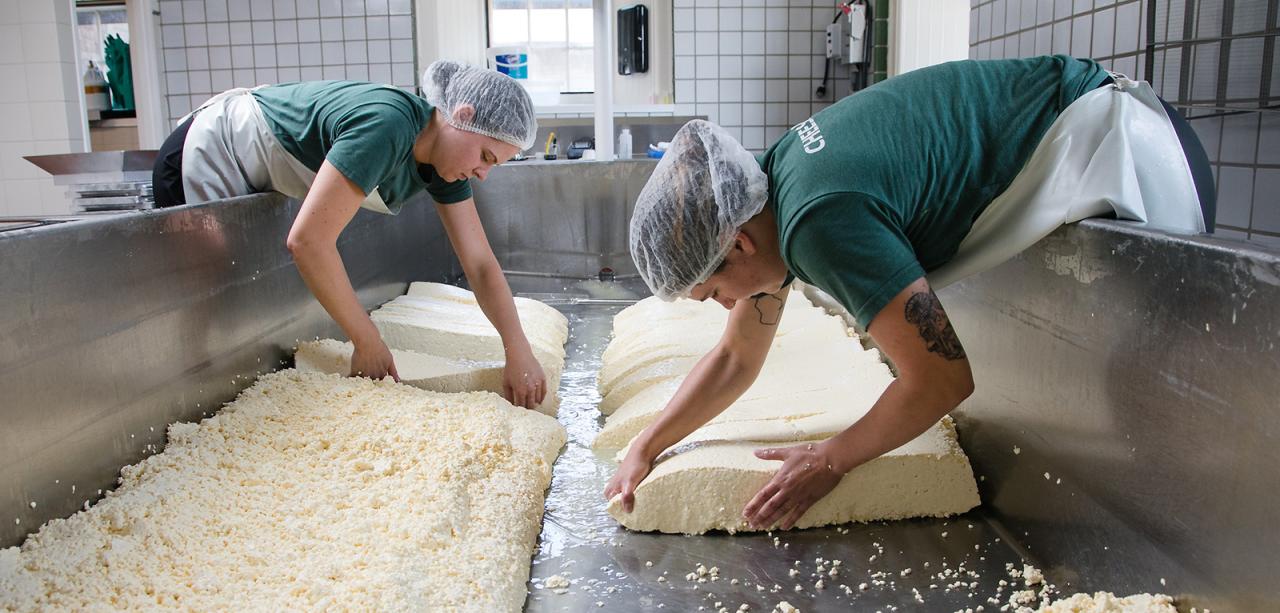Unlocking the Tricks of Artisanal Cheese Making: A Step-by-Step Do It Yourself Guide
In the world of cooking craftsmanship, artisanal cheese making stands as a testimony to the delicate equilibrium between practice and innovation. As we get started on this trip to debunk the art of producing beautiful cheeses, we are encountered with a tapestry of skills and secrets waiting to be unwinded.
Selecting the Right Milk
When starting the trip of artisanal cheese production, the option of milk plays a critical function in determining the high quality and features of the final product. The kind of milk selected impacts the taste, appearance, and overall account of the cheese. Raw milk, straight from the pet, is favored by many artisanal cheesemakers because of its special blend of enzymes, bacteria, and flavor substances. Making use of raw milk comes with guidelines and risks, making sterilized milk a safer alternative for newbies.
When picking milk for cheese production, it is very important to think about the fat web content. Greater fat web content in milk can lead to a creamier and richer cheese, while lower fat web content might lead to a drier and firmer structure. Additionally, the resource of the milk, whether from cows, goats, sheep, or buffalo, adds distinct flavors and qualities to the cheese (Melbourne Made Cheese). Each kind of milk brings its own nuances, enabling for a large range of cheese selections to be crafted based upon the picked milk. Ultimately, the selection of milk is a basic decision that establishes the foundation for a successful artisanal cheese-making venture.
Culturing and Coagulating
To start the cheese-making process, the important actions of culturing and coagulating must be carefully executed to change milk into curds and whey. Culturing includes presenting valuable germs to the milk, which after that starts the fermentation process. These microorganisms transform lactose (milk sugar) right into lactic acid, developing the acidic setting required for coagulation. The sort of culture utilized can dramatically impact the flavor, appearance, and ripening of the final cheese item.

The timing and temperature control during culturing and coagulation are vital factors that affect the last result of the cheese. Correct execution of these actions is necessary to make certain the preferred appearance, taste, and uniformity of the artisanal cheese being generated.
Draining and Pushing Curds
After the milk proteins have actually coagulated and the curds have actually been reduced to launch whey, the next essential action in artisanal cheese making includes draining and pressing the curds to achieve the wanted texture and uniformity of the last cheese item. Draining is the process of separating the curds from the whey. This can be done by transferring the curds into a cheesecloth-lined colander or mold and mildew and allowing the whey to drain off naturally. The moment for draining pipes can vary relying on the sort of cheese being made and the preferred dampness material.
As soon as the curds have adequately drained, the following step is pushing. Pressing assists expel any kind of staying whey and compacts the curds to develop a solid cheese wheel. Pressing can be done making use of specialized cheese presses that apply gentle and consistent stress over a time period. The duration and pressure applied during pressing will affect the final texture of the cheese, from luscious and soft to hard and firm. Appropriate draining pipes and pressing are essential actions that considerably affect the high quality and characteristics of the artisanal cheese being generated.
Aging and Flavor Methods
Executing thorough aging and flavoring methods is crucial in enhancing the deepness and intricacy of artisanal cheeses, elevating their taste profiles to beautiful levels of improvement and class. Aging plays a crucial duty in creating the one-of-a-kind tastes and check here structures that identify artisanal cheeses. Throughout the aging process, cheeses are saved in very carefully managed settings where elements such as air movement, humidity, and temperature level are adjusted to encourage the development of valuable mold and mildews and microorganisms. This controlled atmosphere allows celebrity to develop slowly, developing complex fragrances and abundant tastes.
Seasoning methods likewise add considerably to the final preference of artisanal cheeses. Cheesemakers may choose to present additional tastes by incorporating ingredients such as natural herbs, spices, or even fruits right into the cheese throughout the manufacturing procedure. Furthermore, some cheeses are cleaned or scrubed with various fluids, such as brine or alcohol, to improve their appearances and tastes.
Covering and Keeping Cheeses

Final Thought
In final thought, mastering the art of artisanal cheese making includes thoroughly selecting the best milk, adhering to exact culturing and coagulating processes, draining and pressing curds properly, and using various aging and flavor strategies. Remember to cover and visit site store your cheeses appropriately to make sure ideal taste and structure growth.
Each kind of milk brings its very own nuances, enabling for a large array of cheese selections to be crafted based on the chosen milk.After the milk proteins have coagulated and the curds have been reduced to release whey, the next crucial step in artisanal cheese making includes draining and pushing the curds to accomplish the preferred appearance and uniformity of the final cheese product. A lot of cheeses need to be covered in wax paper or cheese paper to permit them to breathe while securing them from drying out. For cheeses that require to proceed aging, such as bloomy rinds or cleaned skins, ensure they are saved in a cool atmosphere like a cheese cave or a refrigerator established to the suitable temperature level. By paying focus to the wrapping and storage of artisanal cheeses, cheese makers and lovers can protect the integrity of these delicacies and fully enjoy their complex tastes.